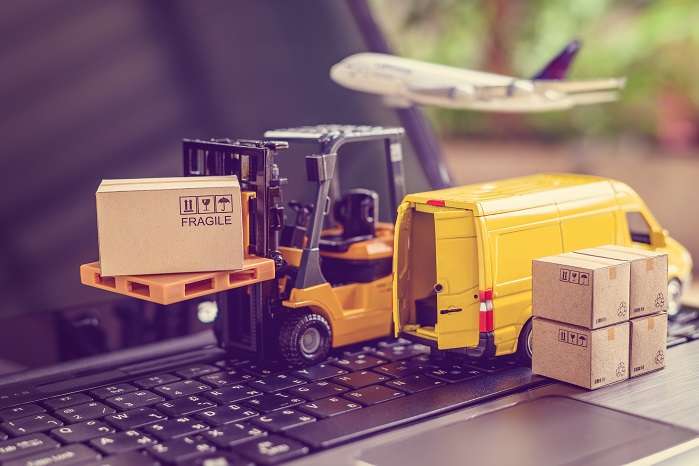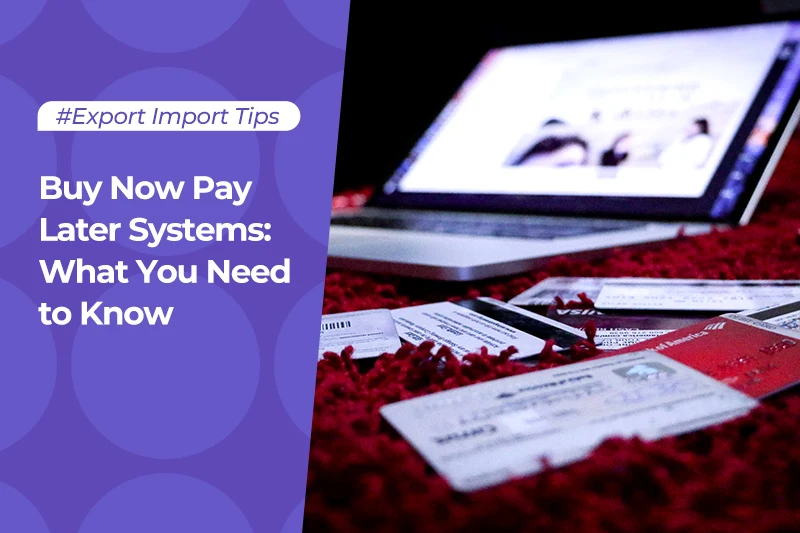How sellers cope with high logistics costs during the pandemic

Due to pandemic-related tailwinds, companies are experiencing painfully stretched supply chains, leading to unprecedented rises in logistics costs.
For context, global logistics providers UPS and FedEx raised rates by 5.9% in 2021 – the first time in eight years that rate hikes would exceed 4.9%.1 Elsewhere, the cost of shipping broke records, with container prices up to 10x higher than two years prior.2
While sellers hoped 2022 might bring some respite, the difficulties persist. Shipping services continue to trade at elevated prices, and logistics providers are now passing on the costs of expensive operations to sellers.
In a market where marginal gains can be vital for survival, cutting down on logistics costs might be a way to attain commercial success.
This article discusses options you may explore and the advantage that Alibaba.com Freight may represent for savvy e-commerce sellers.
Table of Contents
What are logistics costs?
Logistics costs include every expense incurred in moving and storing product components and making customer deliveries. These expenses typically take up between 7% and 10% of your production costs.
Your logistics expenses may comprise the internal costs of moving raw materials to your factory and finished products to final consumers. Or it may relate to the fees you pay logistics firms, such as shipping carriers and third-party logistics providers, to handle some or all aspects of the process.
Because of their expertise and global reach, logistics firms are a preferred option for many companies. For instance, if you have an extensive supply chain, like Apple, which uses over 200 suppliers in nearly 50 countries,3 working with a logistics firm makes sense.
Even if your supply chain isn’t as vast, a logistics solution such as Alibaba.com Freight can be better than in-house logistics, especially if you participate in international trade with global buyers.
Since they’re part of your production costs, logistics expenses play a role in the ultimate price of your goods and services. Higher logistics costs mean you’ll either have to pass those costs on to customers or absorb them yourself – in which case they can also affect profitability.
Logistics costs are an amalgamation of several expense items such as:
- Transportation and shipping: These expenses can take up to 58% of total logistics costs.4 They include all aspects of moving goods between destinations.
- Warehousing: Warehouse rent and maintenance costs are about 11% of logistics expenses.4
- Inventory carrying: These costs typically vary depending on the number and type of goods you stock. They include the costs of storage, depreciation, accounting, etc.
- Supplies and equipment: Equipment you might need to pay for includes shelves, pallets, or special storage equipment for certain goods, like cold freezers.
- Labor wages: You’ll need people to physically handle goods, tag them, store them, etc. These costs include payroll, benefits, insurance, and workers’ compensation.

Impact of the COVID-19 pandemic on logistics costs
COVID-19 will be remembered as possibly the most significant global event this century. Not just because of its health implications but also due to the span of its global effect.
The logistics industry was amongst the most affected by the pandemic. One reason for this is the nature of global supply chains.
Globalization has led to company sourcing and distribution chains that literally reach around the world. As a result, companies rely on logistics firms to affordably move products to and from various countries.
However, while global supply chains enabled access to quality components, affordable labor, and a cheaper process overall, they also created a fragile value chain. That fragility was exposed when countries imposed lockdowns and health restrictions to fight the coronavirus.
China, a global industrial hub, saw some of the first effects of COVID-19 in early 2020. Due to health and travel restrictions, freight forwarders, carriers, truck drivers, cargo handlers, and port operators couldn’t work.
Cargo was backlogged at the country’s major ports.5 Long haul trucking, which carries over 80% of China’s goods, broke down between January and February 2020,6 making transportation unavailable or prohibitively expensive.
Air and ocean freight carriers either had to cancel shipments or leave the country empty,7 depriving international manufacturers of critical components. And those effects rapidly spread to the rest of the world. By April, nearly half of the world’s population was on lockdown, meaning many suppliers couldn’t ship products and customers couldn’t receive them.
Supply chain squeeze of 2021
During 2020, logistics providers either shut down operations at various points or endured longer lead times due to health and travel restrictions. While the development of COVID-19 vaccines brought some hope that 2021 would be better, supply chain difficulties continued to persist.
Some of the challenges to the logistics sector during this period include:
- Higher transportation costs: Shipping costs have risen considerably across the ocean, air, and land freight. According to one report, the cost to ship a 40-foot container between Shanghai and Los Angeles increased by 75% as of December 2021, compared to 2020.1
- Labor shortages: Coronavirus-related health challenges, the uncertainty of post-pandemic work, and labor action are all creating worker shortages. In countries like the US, companies have had to offer outsized wages (up to $110,000 yearly in the case of Amazon7) to attract reluctant truck drivers.
- Warehouse rent hikes: Inflationary pressures from the pandemic have driven warehouse rents up, and more landlords are raising rates to take advantage of a boom period.8
- Global component shortages: Due to an unexpected explosion in consumer demand, the world is short on many things, from original parts to computer chips and even shipping containers.9 Likewise, ports are still experiencing congestion everywhere, from South Carolina to Hamburg and Rotterdam.10 Consequently, sourcing inventory and warehouse supplies has become terribly expensive for many sellers.
Many of these challenges are still a worry for companies in 2022, which is why savvy sellers are exploring ways to cut rising logistics costs.
7 ways to reduce high logistics costs
Cheaper logistics operations can help lower costs, encourage higher sales, and boost profitability. But determining where to cut costs and how can be complex, especially in B2B e-commerce, where businesses typically experience tight margins.
The first step to profitably cutting logistics costs is to prepare for a long-term approach. While quick fixes might provide some immediate respite, they still leave your supply chain fragile. Instead, it’s a good idea to conduct a deep analysis of your logistics value chain, identify gaps, and permanently plug them up.
Here are seven tips to consider as you reorganize your logistics operations.

1. Audit logistics costs
To gain better visibility into your logistics costs, conduct a detailed review of your operations. Ideally, you should identify every logistics service you’re receiving and the cost to your business. In addition, make sure you understand every surcharge and add-on fee you’re paying.
The visibility you gain here will help you understand if your service providers are overcharging or where cost-cutting opportunities lie. Additionally, the audit will allow you to review your carrier or 3PL options and see if other cost-competitive options are available.
Don’t just conduct this review on a one-off basis, either. Periodic audits ensure that costs remain low and help you seize better logistics opportunities immediately they become available.
2. Eliminate unneeded fees
During this period, you can keep costs low by eliminating unnecessary spending. For instance, remove options for same or next-day delivery and other expedited services if you can – or substantially reduce them.
Likewise, scrutinize the frequency of avoidable accessorial fees within your delivery network and work to cut them out. Accessorial fees can include additional handling, address corrections, extended storage, and similar expenditures.
Other actions like purchasing bulk packaging and being proactive with service providers can also help cut costs. For instance, sharing a sales forecast with your carrier alerts them in advance of peak periods and enables you to avoid late fees or expedited charges.
3. Prioritize closer sourcing
One factor that determines the cost of shipping is your shipment route. For example, a lengthier or more challenging course will often attract higher charges. Therefore, prioritizing the most cost-effective route can help save you money.
You might achieve this by identifying shorter routes or exploring delivery pathways that profitably merge multiple destinations. However, you should remember that the shortest route may not always be the best.
An additional option you can consider is identifying geographically closer suppliers. Using a local supplier can significantly contract your logistics costs or eliminate some cost items.
4. Consolidate shipping loads
Less than container load (LCL) shipments might not be a good idea during this period. Rather, work to exploit that empty space by consolidating loads. For example, you might organize orders to capture customers from one geographical location in a single shipment, ensuring fewer trips and reduced expenses.
Optimizing shipping loads with only your most profitable products can also be beneficial. Evaluate your stock-keeping units (SKUs) to identify your best-performing products and then prioritize those in shipments.
At the same time, move away from poorly-performing inventory or non-vital supplies. You can build significant sales volume and increase throughput by prioritizing profitable goods.
5. Proactive customer service
Returns, delivery disputes, and chargebacks are a normal part of e-commerce. But the costs they represent will further bloat your logistics expenses when frugality is paramount. Significantly reducing these expense heads will help to lighten your logistics burden.
One way to minimize these costs is to proactively clarify critical delivery terms and other conditions buyers should know. Take the extra effort to ensure customers know all the facts and have the best possible information before finalizing their order.
When disputes arise, prioritize resolution measures that avoid these fees. For instance, you can resolve conflicts by offering future discounts or a free product on the next order. But carefully craft these measures and monitor them to ensure they’re actually saving you money.
6. Explore creative options
For instance, you can save money by leveraging ocean or land freight rather than air delivery. While you might lose faster delivery times, the tradeoff in lower shipping fees might be worth it.
Likewise, you can creatively exploit shipping zones to cut logistics expenses. Shipping zones classify various geographical locations to impose fees. Zones that are farther away are more expensive to ship to.
If you find you’re receiving many orders from an expensive zone, you can reduce your shipping fees by maintaining distribution centers or a pickup facility in that area.
7. Leverage digital tools
Digital solutions take the guesswork out of your logistics sector. You can better identify optimal routes, rates, and other shipping arrangements with intelligent tools.
Likewise, software like logistics management systems can automatically audit your entire operation to determine inefficiencies, risk factors, and opportunities for improvement. At the same time, this software can plug into your other enterprise resource management (ERP) software.
It will help break down silos between departments and minimize costly errors. With great technology, it’s easier to connect logistics to other operations and management, so there’s greater collaboration and less expensive mix-ups.
Alibaba.com Logistics Services
In addition to the cost-cutting options listed above, B2B e-commerce sellers can leverage Alibaba.com’s digital logistics solution for a better shipping experience.
Alibaba.com Freight is a 360-degree logistics solution that lets sellers find, compare, book, and manage freight in one intuitive tool. It takes the complexity of coordinating carriers, freight forwarders, agents, and customs clearance from the process, leaving a simple procedure that you can complete with just a few clicks.
Companies can ship goods from China, or other countries like Vietnam to nine locations across North America and Europe using Alibaba.com Freight. The solution includes options for ocean freight, air shipping, or air express, depending on customer needs and shipping destination.
Likewise, the shipping platform incorporates end-to-end tracking and live updates, so the location and speed of shipments are completely visible at all periods.
Crucially, Alibaba.com Freight provides a safe harbor for sellers looking to escape opaque and monopolistic freight charges. The digital logistics solution lets sellers view and compare prices from twelve providers.
All prices on the platform are fully transparent and competitive with flexible payment options, allowing sellers to find a logistics package that aids their business.
Sell on Alibaba.com
Logistics costs are and will continue to be a major business expense. But with the tips we’ve shared in this article, you’re hopefully in a better position to prudently manage these costs and their impact on your bottom line.
Alibaba.com also recognizes the impact that expensive logistics can have on business profitability. So the platform created its logistics solution to give sellers the comprehensive support and market-leading technology they gain from an Alibaba.com seller account.
Your business can also benefit from the competitive pricing and end-to-end support available with Alibaba.com Freight. Simply open a seller account today to get started.
References:
1. https://www.wsj.com/articles/shipping-and-logistics-costs-are-expected-to-keep-rising-in-2022-11639918804
2. https://www.bloomberg.com/news/features/2021-09-16/supply-chain-issues-shortages-and-delayed-shipping-through-2023?sref=EP6bV7CS
3. https://www.nytimes.com/2016/12/29/technology/iphone-china-apple-stores.html
4. https://transportgeography.org/contents/chapter7/logistics-freight-distribution/global-logistics-costs-function/
5. https://www.dhl.com/content/dam/dhl/global/dhl-global-forwarding/documents/pdf/dhl-dgf-covid19-global-ripple-effects-on-supply-chains.pdf
6. https://www.bloomberg.com/opinion/articles/2017-11-30/china-transforms-the-trucking-business
7. https://www.ifc.org/wps/wcm/connect/2d6ec419-41df-46c9-8b7b-96384cd36ab3/IFC-Covid19-Logistics-final_web.pdf?MOD=AJPERES&CVID=naqOED5
8. https://www.wsj.com/articles/inflation-pressure-hits-new-warehouse-leases-11638788401?mod=article_inline
9. https://www.bloomberg.com/opinion/articles/2021-10-11/supply-chain-disruptions-almost-too-many-reasons-to-count
10. https://www.logisticsmgmt.com/article/global_logistics_2022_is_this_the_new_normal
Start your borderless business here
Tell us about your business and stay connected.
Keep up with the latest from Alibaba.com?
Subscribe to us, get free e-commerce tips, inspiration, and resources delivered directly to your inbox.















